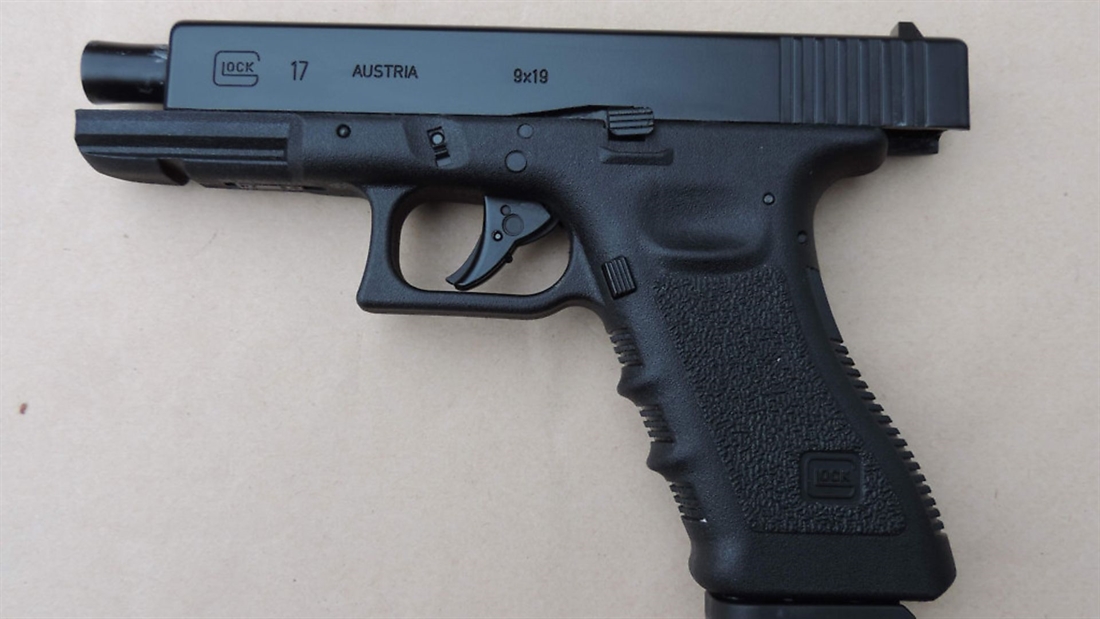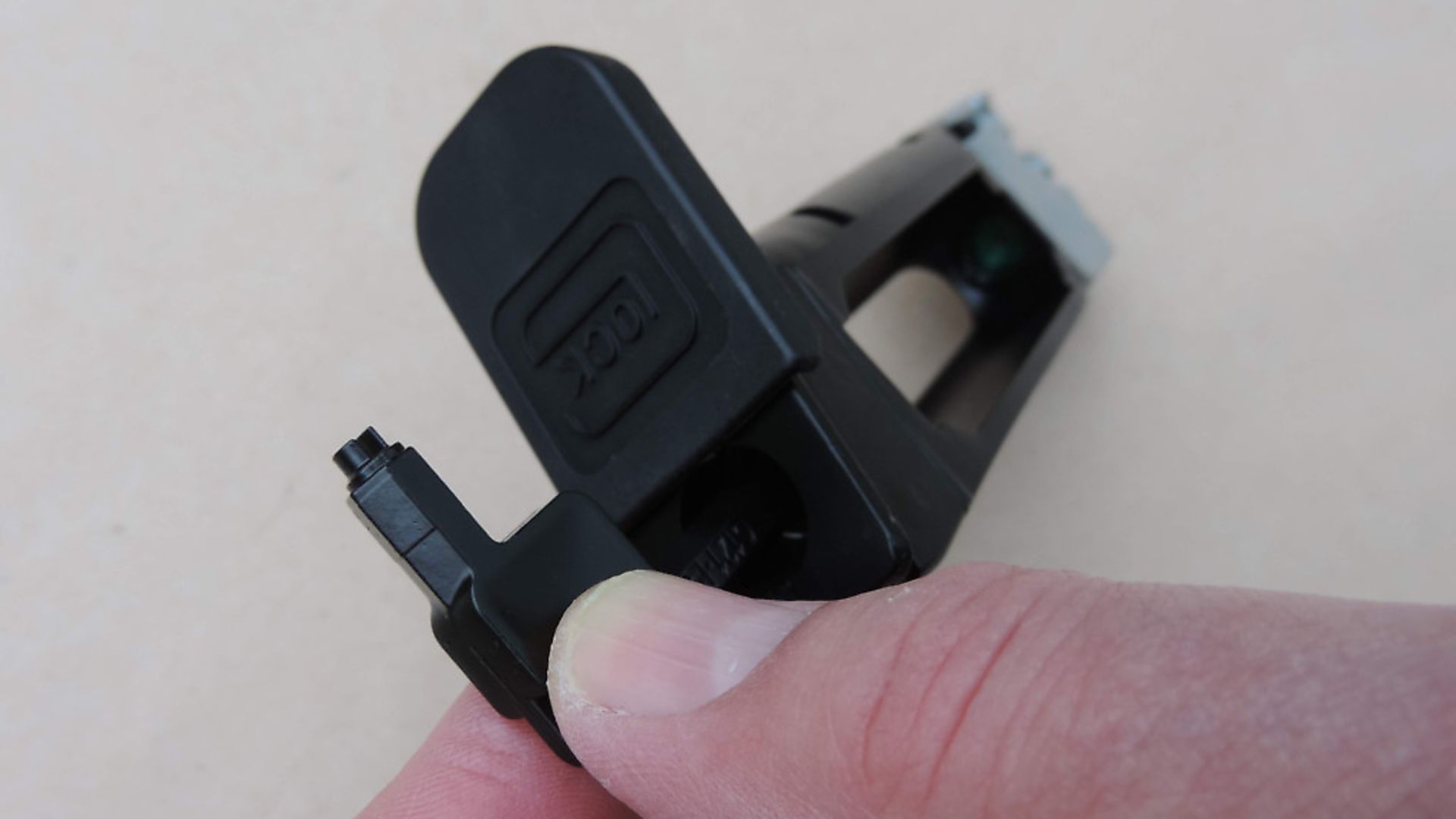A closer look at the iconic Glock 17
Would you like to appear on our site? We offer sponsored articles and advertising to put you in front of our readers. Find out more.
John Milewski brings us the history and current form of an iconic pistol
Many CO2 replica pistol enthusiasts have been eagerly awaiting the launch of the blowback Glock 17 by Umarex, particularly the pellet version. Almost all at once, three variants of the Glock 17 have hit the shops, and we’ll take a look at all three in detail over the course of the next issue of AirgunWorld.
Historical background
The story of Gaston Glock and his pistol design is a fascinating one, especially as the Austrian engineer had no firearms manufacturing experience until he became aware of the Austrian army’s intention to hold trials in 1980 for their new service pistol. Glock had made ancillary items for the Austrian army, but never any guns, so he took a look at contemporary pistols and resolved not simply to meet the army’s requirements, but to exceed them by thinking outside of the box. Glock’s entry was named after his factory’s seventeenth product, and the Glock 17 beat all the competition to enter service with the Austrians as the P80.
This was just the beginning and the polymer-framed pistol was soon afterwards adopted by U.S. police forces, and those of many other nations, resulting in sales in the millions and a personal fortune for Gaston.
So, what made Glock’s design a modern classic and such an overnight success? Firstly, the lower frame was made of polymer, resulting in a light, overall package, the pistol’s standard double-stack magazine could hold up to 17 rounds of 9mm and it could safely be holstered loaded, and ready for instant action, somewhat like a revolver. It is this last feature that has made the Glock incredibly popular with police forces used to double-action revolvers and who were looking for a replacement for worn-out guns. The Glock came along at just the right time.
Simply brilliant
Glock’s ‘out of the box’ thinking resulted in a pistol without an external safety lever. A police officer simply has to rack back the slide and holster the pistol. Internal safeties prevent the Glock from discharging until the trigger is pulled, just like a double-action revolver. A small lever at the tip of the trigger blade is pressed against the blade when the trigger is pulled, and unless this lever is engaged, the pistol’s mechanism remains locked and safe.
Glocks have been made in numerous calibres and sizes over the years. However, all share the same ‘boxy’ profile, 22 degree grip angle and controls in exactly the same place for all models. The latter helps owners when transitioning from one Glock to another because features and maintenance are the same between variants. Owners classify pistols not in Marks, as Air Arms or Webley might do, but in Generations, as in Gen 1, Gen 2, Gen 3, Gen 4 and Gen 5. Umarex currently produce three versions of the pistol that incorporate a blow-back action; a Gen 3 BB, a Gen 3 pellet and BB and a Gen 4 BB.
The Umarex Glocks
Umarex enjoy a deserved reputation for making incredibly authentic airgun replicas of legendary firearms, and the Glock company are very fussy when it comes to licensed products bearing the Glock name. This is why the Umarex has taken so long to reach production – because it had to satisfy Glock. The pistol and its packaging is all Glock branded and it would be easy to mistake Glock as the actual manufacturer of the CO2 versions of the Glock 17.
Let us firstly take a look at the cheapest: the Gen 3 BB only variant:
Weighing in at 705g, the Gen 3 weighs exactly the same as an unloaded Glock 17 with an empty mag’, according to the Glock website. Length is the same as an original, as are the overall handling characteristics. The pistol is not designed to be field stripped, but the slide locks up after the last round has been fired and the slide release catch functions just like the original.
Function
The Gen 3 comes with a Glock-branded key/tool that can be used to tighten up or loosen a CO2 cartridge within the magazine. To access the Allen bolt, slide the magazine’s baseplate forward after it has been removed from the pistol’s grip. The front of the magazine incorporates a single-stack, 18-round magazine for BB/ball, with a follower that can be locked down whilst you load balls into the magazine. I loaded 15 per magazine to save wear on the magazine spring and prevent jams with the first few shots because the top balls are under greater tension than those following. The magazine release catch is located on the left side of the frame, behind the trigger guard, and the magazine will drop out freely when released, so take care to hold it when operating the release catch.
Once loaded with fresh CO2/ball, you can either rack the slide or fire the first shot double-action. Succeeding shots will discharge with a lighter, single-action pull until the last shot has been taken and the slide locks back to the rear.
I’ll save my report on how the Gen 3 performed downrange and how it compared to the pellet-firing variant until the next time. Until then, shoot safely and enjoy your sport.
For more information, visit umarex.com.
Related articles
And the award goes too...
Hundreds were nominated, over 50,000 votes were cast, and now it’s time to reveal who won what at the Great British Shooting Awards
By Time Well Spent
Get the latest news delivered direct to your door
Subscribe to Airgun World









